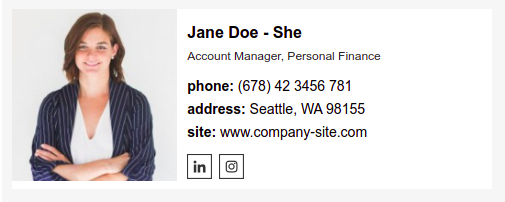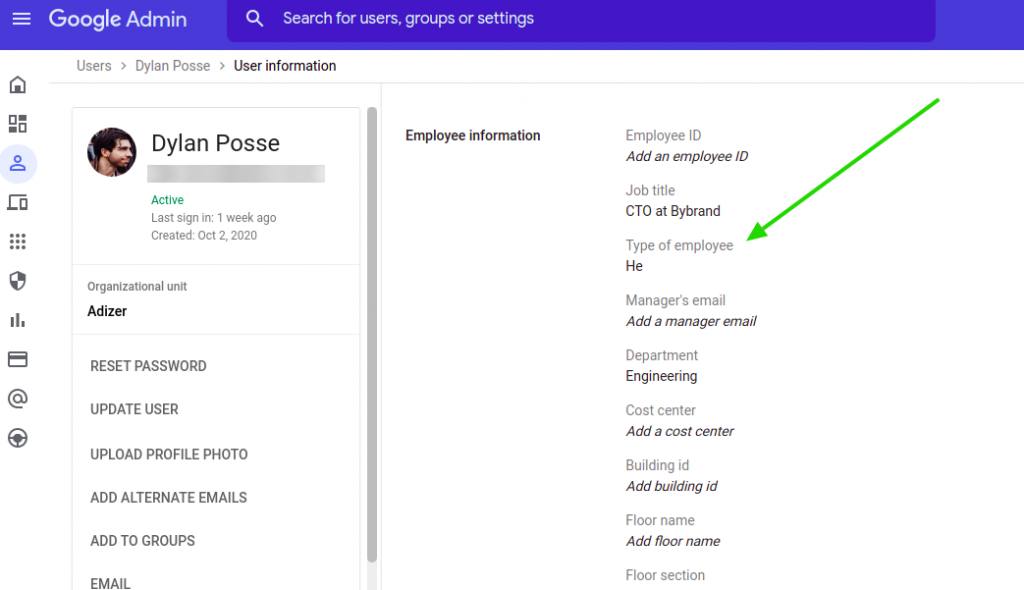Using gender pronouns as part of your email signature is becoming increasingly popular. Individuals and companies alike are recognizing the fact that not all people fall into just two groups: male or female.
To include those who don’t see gender as binary, to support the LGTBQ community and project a culture of inclusivity, the trend is to use gender pronouns in email signatures.
If you’re wondering whether your employees should be able to include their own pronouns in their email signatures, here’s everything you should know.
Adding pronouns to email signatures – where it started
Although it can be a hot political topic, the pronoun-identifying practice started some time back in non-profit and academic institutions. Today, it has become increasingly common in the corporate world as well.
The rationalization behind the practice is that it’s important to recognize that many people in the workforce are part of the “gender expansive” community. The Human Rights Campaign Foundation defines this as “those that do not self-identify as male or female.”
A recent Pew Research survey found that roughly 20% of Americans know someone who prefers to go by a gender-neutral pronoun. That is too big a number to ignore. When someone is referred to with the wrong pronoun, it can make them feel invalidated, disrespected, or dismissed.
As such, it makes sense for people to add pronouns in their bios, profiles, and even email signatures so that others can address them properly.
Gender identity: The case for using preferred gender pronouns
Using gender pronouns in an email signature is meant to make the workplace more inclusive and comfortable for all. This includes staff who identify as transgender, non-binary, or belonging to the gender non-conforming community.
When organizations adopt gender pronouns as a way to acknowledge gender identity or gender expression, they send a strong message that they view gender as non-binary. It is a way to normalize the conversation and process, has little risk, and creates a more welcoming environment for everyone.
Across the world, HR departments have started encouraging the practice as part of their DEI – diversity, equity, and inclusion – measures. At the same time, it has become a personal choice for many.
Understanding pronouns to acknowledge a person’s gender identity
For centuries, gender pronouns have been used in the English language to clarify whether a person is male or female. Today, society has added gender-neutral or gender-inclusive pronouns – the most ubiquitous of which is ‘they’ – to our grammar. These neutral pronouns accommodate those who do not want to be associated with a specific gender.
To illustrate, Time magazine reported that 200 linguists at the American Dialect Society declared the singular “they” the 2015 word of the year. Oxford Dictionary and Merriam-Webster both also include the singular “they.” In other words, “they” is now a recognized and grammatically correct singular pronoun.
Most common masculine, feminine, and gender-neutral pronouns
Note: this is not an exhaustive list. It’s up to each individual how and when they want to add gender pronouns.
Feminine pronouns: She / Her / Hers / Herself
For example:
- She went to the park.
- I sat with her.
- The car was hers.
Masculine pronouns: He / Him / His / Himself
Examples:
- He went to the park.
- I sat with him.
- The car was his.
Gender-neutral pronouns
The most common gender-neutral pronoun used by non-binary and gender-nonconforming people is “they/them/their.” However, that’s not the only option.
They / Them / Their / Themself
For example:
- They went to the park.
- I sat with them.
- The car was theirs.
Ze / Zir (Zem) / Zirs (Zes) / Zirself (Zemself)
Examples:
- Ze went to the park.
- I sat with zir / zem.
- The car was zirs / zes.
Gender-neutral: (Name)
This is a gender-neutral alternative when someone does not want to use pronouns
For example:
- (Name) went to the park.
- I sat with (Name).
- The car was (Name)’s.
Examples of gender pronouns in email signatures

Or

Email signature with gender-neutral.

Keep in mind that not everyone in the company will be comfortable with adding pronouns to their company email signatures. HR managers should be sensitive before compelling all staff to include gender pronouns in email communication.
However, the downside of not knowing how to address the person you are writing to is risking making a bad first impression or hurting the person’s feelings. This can result in having to apologize or completely rephrase an email.
Adding gender pronouns in email signature templates
Using Bybrand’s customizable email signature templates makes adding another line for pronouns in your email signature super easy. The pronouns can also follow the worker’s name.
To do it on a company-wide scale, HR managers can get the buy-in from their workforce by inviting them to respond to an email asking them which pronouns they want to include in their signatures.
For example, send an email to all employees asking them to choose from the following options:
- (he/him/his)
- (she/her/hers)
- (they/them/theirs)
- I’d rather not have any pronouns included
Simply add inputs to a CSV file and perform a bulk email signature update for your company using the Bybrand email signature manager.
See also: Integration Bybrand with Google Sheets.
Companies that encourage the use of gender-neutral pronouns
In June 2021 the Gender Recognition Act (GRA) was signed into law in New York. This allows residents to choose M, F, or X gender markers on driver’s licenses, birth certificates, and state IDs. It offers a path to a non-binary gender marker on state documents and true gender equality.
- Investment bank Goldman Sachs issued pronoun guidelines in November 2019.
- Defense and space industry organization Ursa Major Technologies encourages staff to include pronouns in their email signatures.
- TIAA offered employees guidance on asking for a client’s preferred name and pronouns.
- Virgin has long been an ally of the LGBTIQA+ community and encourages employees to use pronouns in email signature templates.
- LinkedIn rolled out a pronouns field for its 200 million U.S. users in March. Industries that show greater adoption include public policy, philanthropy, communications, and online media.
- Zoom and Slack created functions that allow users to add pronouns to their profiles. 16,420 organizations and businesses have so far adopted the feature.
- Google Workspace now makes an additional field available for pronouns in the user’s profile in the Directory.
- Asana, a popular project manager, lets you add your preferred pronouns to your user profile.
In the Google Workspace, the field Type of Employee means pronouns to each user profile.

7 tips for using gender pronouns in email signatures
Here are some tips on how employers can navigate company email signatures to include non-binary people.
- Don’t assume someone’s pronouns based on their name or what they look like.
- If you make a mistake, quickly apologize and use the correct pronoun(s) going forward.
- Getting used to using gender-neutral pronouns takes time. Practice using them and soon they’ll become second nature.
- Some people may go by multiple sets of pronouns while others don’t use pronouns at all, or only use their name. Be sensitive to what they use.
- If the person you’re referring to has not stated what their pronouns are in their email signatures, use “they/them.”
- When introducing yourself, state what your pronouns are. I.e., “Hi, my name is Sally. My pronouns are she/hers.”
- If you’re unsure about others’ gender identities or preferred pronouns, refer to them by their name rather than “her” or “him”.
Final thoughts
We all want to be inclusive and sensitive to others. Putting gender pronouns in email signatures to signify a person’s gender identity is one way to show respect to others.
By respecting different gender identities in our conversations with others, employers can go a long way in doing away with assumptions. Using pronouns in email signatures is one effective way of doing that.

Create your first email signature with Bybrand
Bybrand offers the ability to generate, administer, and distribute essential email signatures for your employees.
